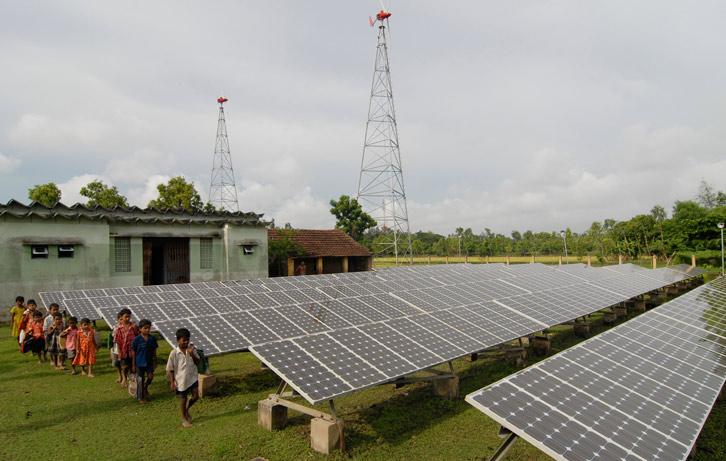In the realm of energy and environmental projects, the pursuit of financial resources is an endeavor laden with complexity and nuance. Initiatives targeting sustainability, renewable energy, and environmental restoration often require a diverse array of financial strategies to successfully translate conceptual plans into actionable realities. This article delineates an extensive array of approaches and methodologies for securing financing for such projects, disaggregating the multifaceted landscape of potential funding sources.
To embark on the journey of financing energy and environmental initiatives, it is imperative to first comprehend the various project stages, as funding needs may fluctuate considerably throughout the lifecycle of a project. The stages typically encompass initial feasibility studies, project execution, technology deployment, and operational sustainability. Each phase presents distinct requirements and preferred funding mechanisms.
At the nascent phase of project conception, grants and subsidies often serve as foundational financial support. Governmental agencies, non-governmental organizations (NGOs), and international bodies may offer grants aimed at fostering innovation in clean energy technologies and environmental practices. These funds usually require comprehensive proposals that outline project objectives, potential impacts, and alignment with governmental policies on sustainability. It is paramount to research the eligibility criteria and application processes meticulously, as stringent adherence to guidelines is frequently a prerequisite for consideration.
Furthermore, public-private partnerships (PPPs) are increasingly garnering traction as an avenue for funding. Such collaborations leverage the strengths of both sectors; governments may provide initial capital or a conducive regulatory framework while private entities offer expertise, technology, and efficiency. This synergistic approach not only alleviates fiscal burdens but also fosters innovation, driving projects toward successful realization. Effective management and mutual trust are essential for the success of PPPs, necessitating robust contractual agreements delineating the roles and commitments of each party.
As one progresses into the project execution stage, the imperative for investment capital becomes increasingly pronounced. This capital can be secured from diverse sources, including venture capital firms, angel investors, and corporate financing. It’s critical to craft a compelling business case that highlights the projected financial returns, sustainable impact, and alignment with market trends. Investors are often incentivized by innovations that promise not only ecological benefits but also significant economic viability.
Another principal financing mechanism worth exploring is crowdfunding. This approach has revolutionized the availability of capital for grassroots projects, permitting individuals and communities to solicit funds from the public through online platforms. By harnessing the power of social media and community engagement, project proponents can attract small contributions from a large number of individuals, thereby democratizing the funding process. Successful crowdfunding campaigns typically emphasize storytelling and community impact, serving to connect potential backers with a shared vision.
Moreover, impact investing has emerged as a transformative paradigm, directing capital toward projects that yield social and environmental returns alongside financial profits. Institutions and individuals who engage in impact investing seek measurable outcomes in areas such as carbon reduction and biodiversity conservation. It is essential to quantify the expected benefits and align project goals with the core principles of sustainability to appeal to this new breed of investors.
Transitioning from execution to operational sustainability often necessitates a reassessment of funding strategies. Debt financing, often in the form of loans from commercial banks or specialized green lenders, might be sought to bolster ongoing operations or expand project scope. Lenders frequently evaluate a project’s cash flow potential and risks associated with market fluctuations. Thus, comprehensive financial forecasting and risk assessment are vital components of proposals submitted for debt financing.
In parallel, exploring carbon credits and emission trading systems can provide additional revenue streams. Projects aimed at reducing greenhouse gas emissions may qualify for carbon credits, which can then be sold to corporations seeking to offset their own emissions. Engaging in market-based environmental solutions fosters intra-industry cooperation while simultaneously generating critical funds to sustain and expand projects.
Further emphasizing the need for diverse financial strategies, partnerships with philanthropic organizations can yield bespoke funding options tailored to specific environmental goals. Philanthropists and charitable foundations are increasingly directing resources toward innovative sustainability initiatives, especially those that demonstrate significant long-term impacts. Cultivating relationships with such organizations can lead to grants or long-term funding commitments, contingent upon meeting predefined milestones.
Lastly, a concerted effort toward networking and stakeholder engagement is paramount in the quest for financing. Building relationships with industry experts, financial advisors, and peer networks can unveil hidden opportunities and foster collaborative projects. Attending industry conferences, seminars, and workshops not only enhances one’s knowledge base but also creates avenues for potential synergies and partnership opportunities.
In conclusion, seeking finance for energy and environmental projects necessitates a comprehensive approach that encompasses a variety of funding sources and innovative strategies tailored to specific project needs. With clarity on the stages of project development and an understanding of the diverse funding mechanisms available, stakeholders can successfully navigate the labyrinth of sustainable financing. By remaining adaptable, engaged, and informed, project proponents can transform their visionary concepts into viable and impactful realities, ultimately contributing to a more sustainable and resilient future.










